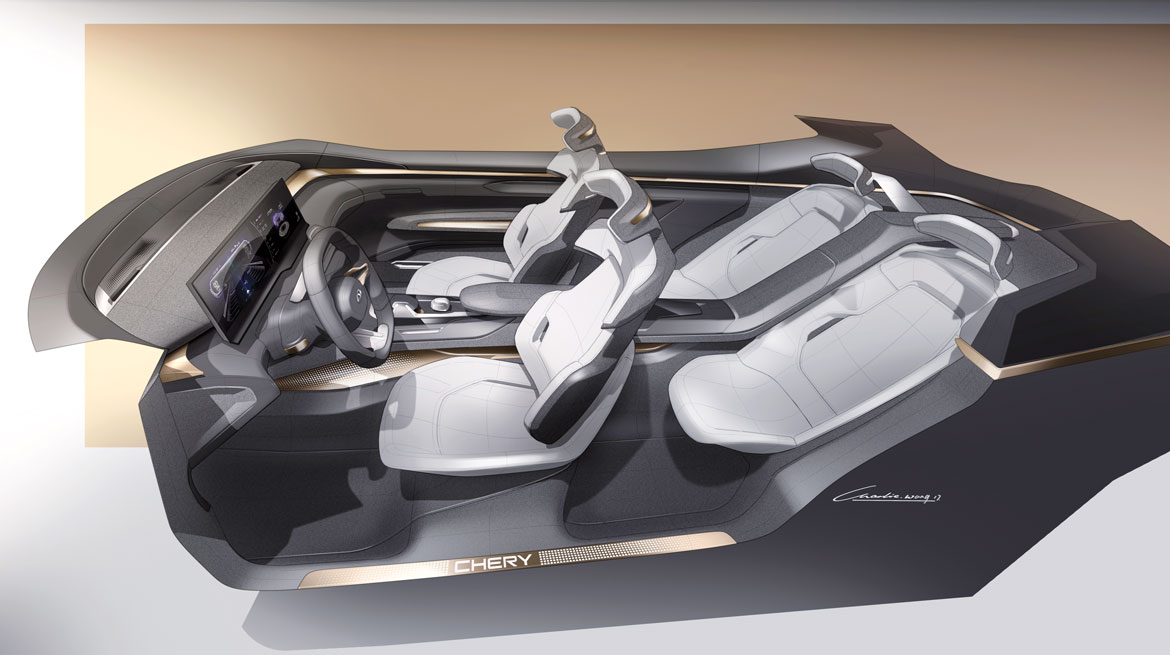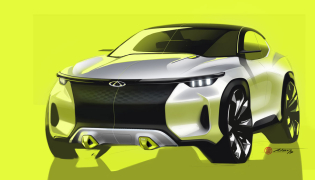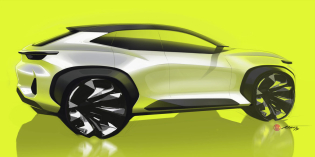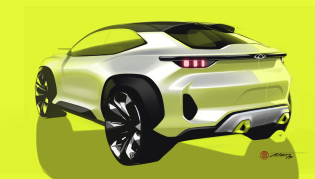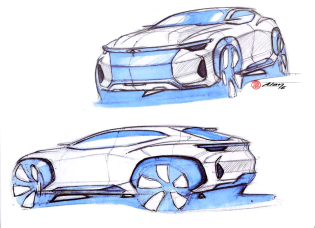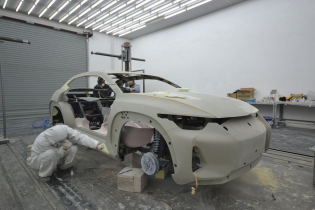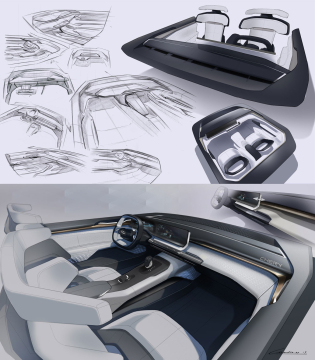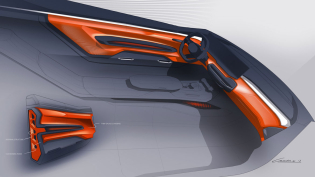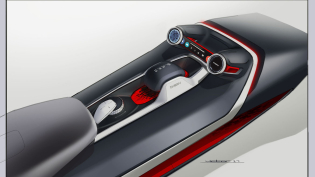The Tiggo Coupe concept is a look into the future design direction of the Chery brand, a Chinese automaker that has made huge strides since executive design director James Hope was brought in to oversee design in the company’s studios in 2012.
While the Chery FV2030 concept shown in 2016 showcased the company’s design vision from a brand perspective – lining up the company’s design DNA – the 2017 Tiggo Coupe concept is a look into the design language that will be used on forthcoming production projects.

Designed to cater to the progressive modern mainstream (PMM) buyer the Tiggo Coupe concept tells the future story of Chery’s “fun to drive” brand tagline through a sporty, electric, four-passenger hybrid coupe/crossover vehicle.
The idea was born from a sketch penned by exterior designer Alan Derosier in November 2016, which embodied the future progression of the company’s design language.
Measuring in at 4662mm long, 1954mm wide, 1551.5mm tall and riding on a 2700mm-long wheelbase, the car’s exterior design is demarcated by bold 3D graphics and a waterfall front end, where the badge and brand bar slices though the negative section in the grille then flows over the bumper beam
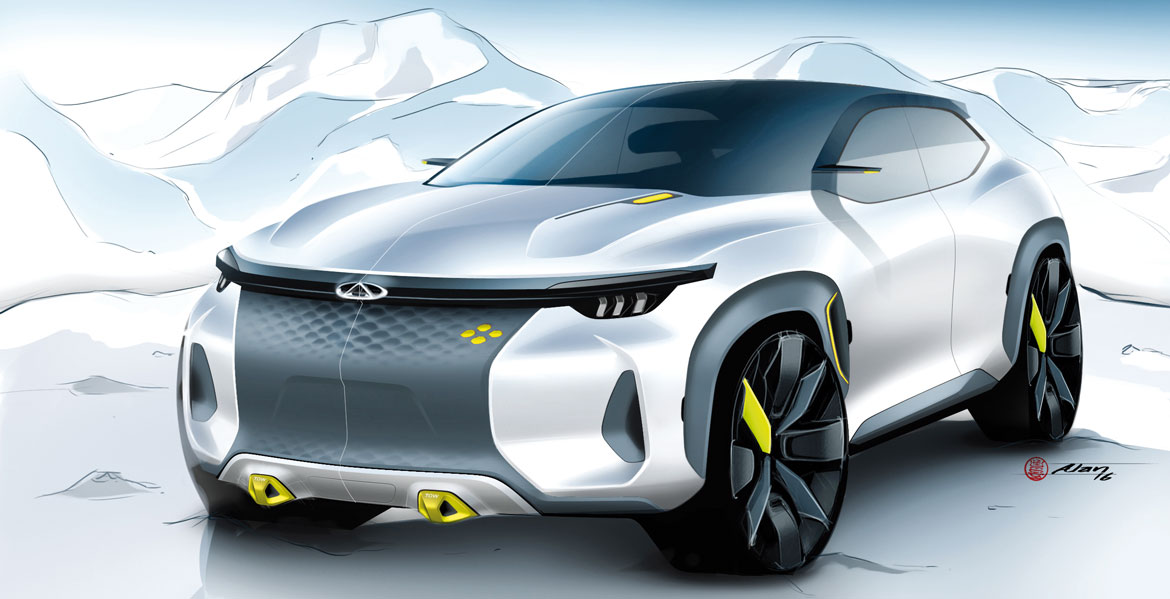
The car’s sculpted, clean surfaces and crisp lines add a bit of tension and capture the essence of the brand’s design philosophy, while the illuminated bar in the front and rear of the vehicle also signals the evolution of Chery’s night signature.
Some of the design highlights include a 3D diamond-textured C-post graphic – which could be 3D printed and personalized on production models – and a new tire concept, specifically developed to reduce rolling resistance at speed while guaranteeing optimal tread contact under cornering or braking forces (like a motorcycle tire).
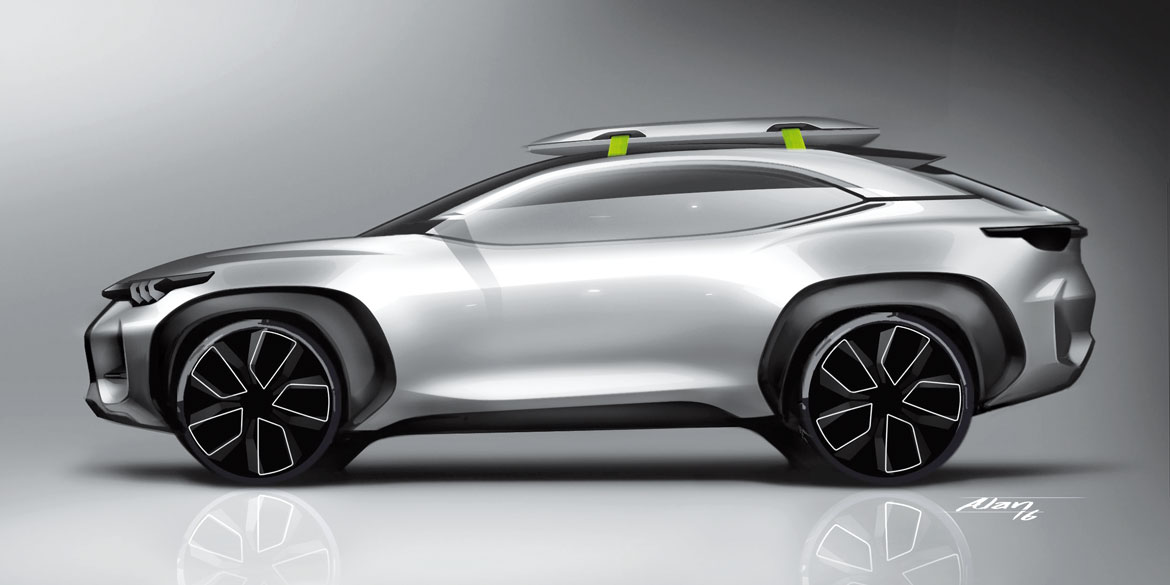
The goal with the Tiggo Coupe Concept’s interior design was to create a premium, modern space that also showcased the brand’s new asymmetrical air vent layout, which will become a signature in Chery’s production cars.
The four-seat cabin’s black and white colorway creates a yin/yang effect, with a copper accent threading through it. Subtle 3D patterns that mimic the motif on the grille and foglamp areas hide speakers in the headrests – which provide an individual sound area for passengers – and act as an outlet for the in-car air purification system in the sides of the center console.

But the most interesting aspects are the rotating 4D seats that compensate for movement on the road – adding a heightened sensory experience for users that embodies the ‘fun to drive’ tagline – and the steering wheel, which transforms into a joystick for gaming when the car is in autonomous mode.
The Chery Tiggo Coupe concept was very well received at its Shanghai launch and for good reason. It pushes forward some ideas that are very much on-trend in the segment and the market in which it will compete. But it also shows the level of innovation the company’s design team is capable of.
